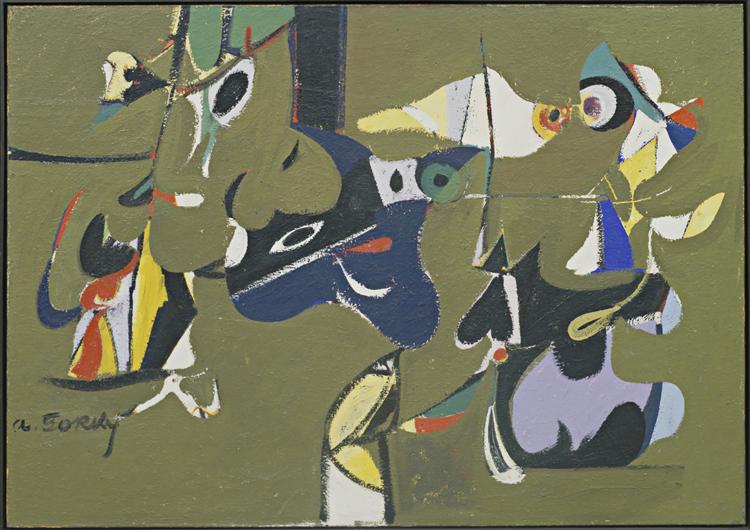Description
Arshile Gorky, prominent figure of the abstract art of the twentieth century, gives us with his work "The Garden of Sochi" (1941) a splendid example of his unique approach to painting, where emotion and form are intertwined in a visual idyll. This piece, created in a critical period of Gorky's life, reflects both his Armenian heritage and the influences of surrealism and the abstract expressionism that defined his style.
In "The Garden of Sochi", the composition is structured in a vibrant deployment of organic shapes and bold colors. Gatchy uses a palette that evokes the warmth and splendor of nature, full of lush green, bright yellow and deep blue. These colors not only serve to represent a natural environment, but are emotional tools that invite the viewer to experience a visceral connection with the work. The tones seem to vibrate and move, creating an almost musical sensation that complements the tactile quality of the canvas.
The arrangement of the elements within the work is equally captivating. The forms are intertwined almost chaoticly, but resonating with a sense of underlying harmony. The curved and undulating lines create visual paths that guide the viewer's gaze through the canvas, promoting an exploration experience. Unlike many works of his time that focused on the exact representation, Gorky chooses to free his subjects from the rigidity of realism, allowing painting to breathe and flow in an almost dreamlike space.
Although there are no visible characters in "The Garden of Sochi", the work evokes a deep connection with human presence through its structure and gestures. Each form seems to communicate a narrative of desire and emotion, elements that Gorky was exploring intensely in his personal life, marked by exile and uprooting. In fact, this painting It can be interpreted as an emotional refuge, a longing for calm and beauty that are experienced in nature, far from the anguish of the historical context of its time.
Gorky's technique is also worthy of mention; He uses a very personal approach to the use of the brush and the mixture of colors, creating layers that grant depth and texture to the surface of the paint. This allows tones to interact with each other, generating a luminosity that seems to evoke the same canvas, suggesting a vibrant world in which the sensitive and sublime coexist.
Throughout his career, Gorky performed works that celebrate nature, reflecting his desire to find a space where he could intertwine his cultural identity with his experience in exile. In "The Garden of Sochi", this desire manifests itself with more force than ever, revealing so much love for his homeland and the struggle to find peace in the midst of chaos.
In the context of modern art, "The Garden of Sochi" is located as a lighthouse of how the abstract can be a vehicle for emotion and personal expression. When looking at this work, the viewer not only observes a garden, but is invited to enter the complexity of human emotions that Gorky was sailing in his time. Its ability to capture beauty in the ephemeral and the struggle in everyday life converts this painting into an indelible work within the Canon of the Art of the 20th century.
KUADROS ©, a famous paint on your wall.
Hand-made oil painting reproductions, with the quality of professional artists and the distinctive seal of KUADROS ©.
Art reproduction service with satisfaction guarantee. If you are not completely satisfied with the replica of your painting, we refund your money 100%.

